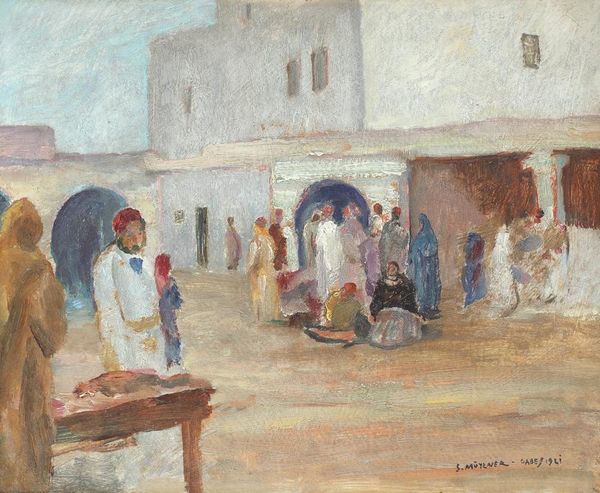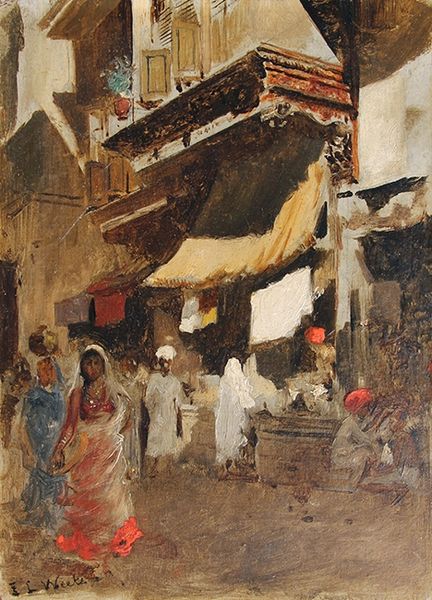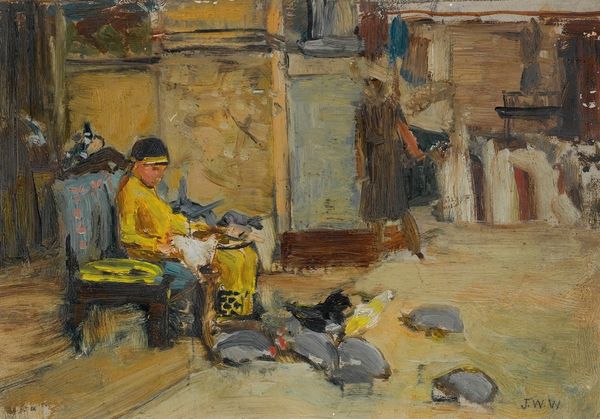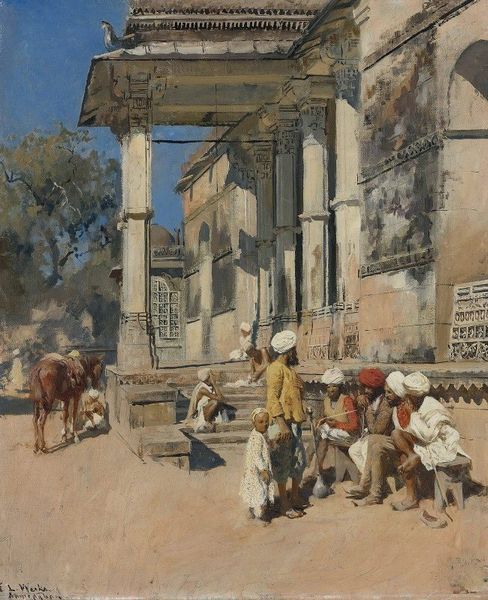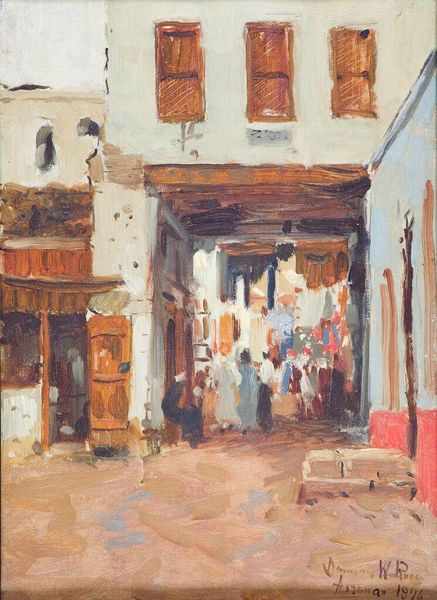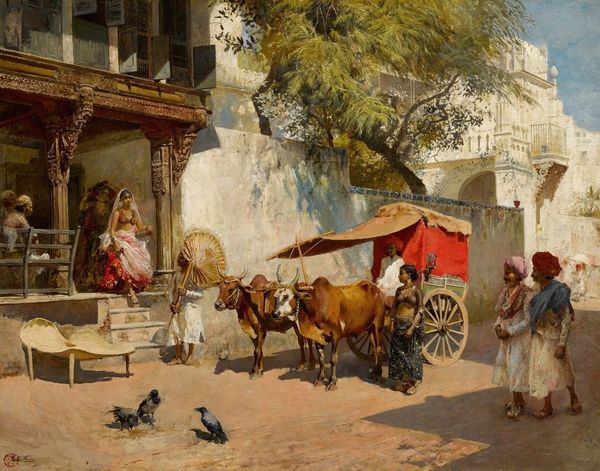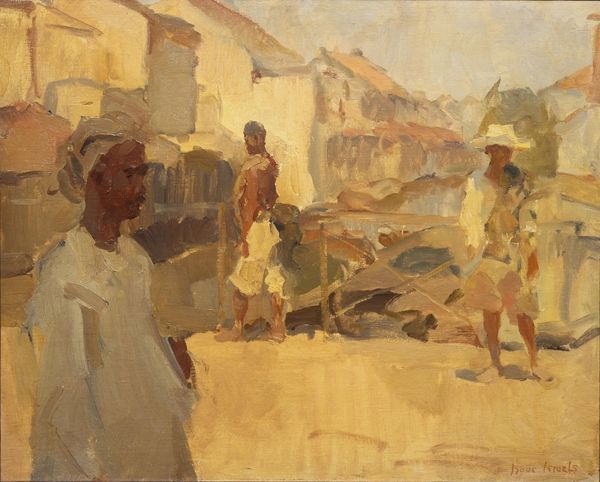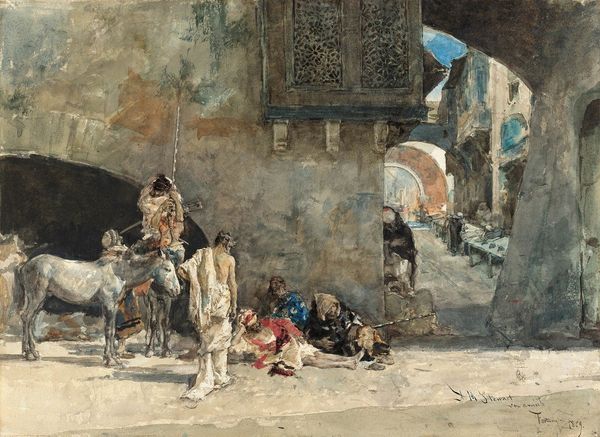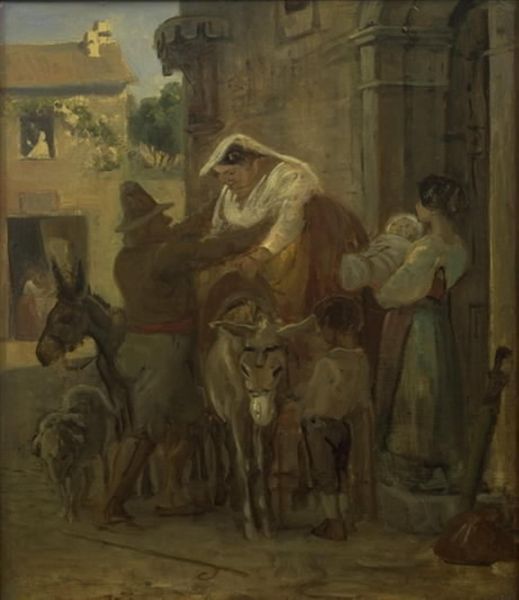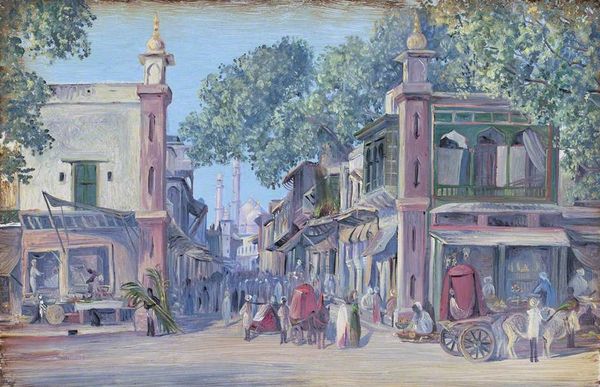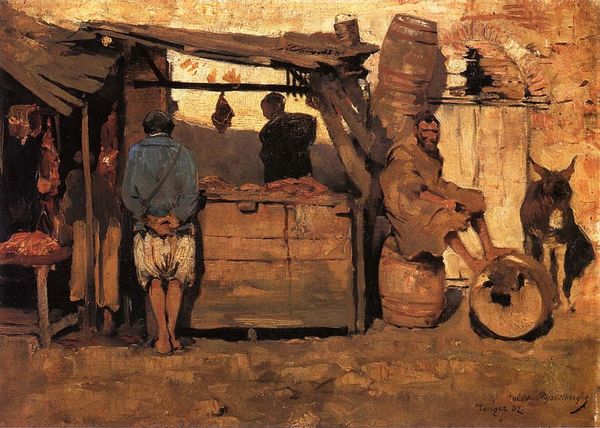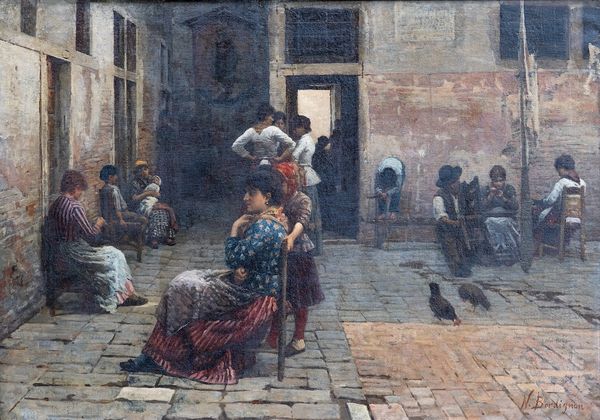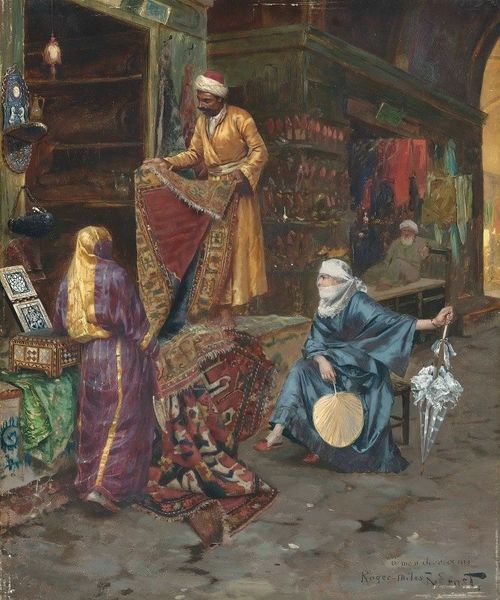
oil-paint
#
oil-paint
#
landscape
#
painted
#
oil painting
#
orientalism
#
cityscape
#
realism
Copyright: Public Domain: Artvee
Editor: Here we have Wilhelm Kuhnert's "Straßenszene auf Ceylon," painted in 1907, using oil paints. The first thing that strikes me is the activity—it really captures the bustle of a street scene. What draws your attention in this painting? Curator: I'm fascinated by how Kuhnert uses recurring imagery to evoke Ceylon, now Sri Lanka. Consider the palette. The warm earth tones and vibrant flashes of color – the saffron robes, the exotic fruits – speak to a Western audience's constructed memory of the "Orient" during that era, referencing European exoticism and colonialism. Editor: So you're saying these details play into a kind of... visual shorthand for the region? Curator: Precisely. Observe the animals: the languid dogs, the water buffalo. Animals often represent freedom and abundance, but in a colonial context, can those meanings shift? And how do people read these images through contemporary eyes? What might this Ceylon street have symbolized to its inhabitants then versus now? Editor: That’s a really interesting point, because what feels almost idyllic to me now might have been experienced very differently back then. Are there other clues within the composition? Curator: Note how the figures in shadow are rendered, contrasted to the light falling on figures near the front. Kuhnert seems focused on certain faces more than others. Can we consider this Orientalism, if not cultural tourism? What’s missing from our field of view? Editor: I hadn’t considered the role of light in emphasizing certain subjects over others. That definitely adds another layer to how I see this piece. Curator: Right? By dissecting the visual vocabulary employed, we start to unearth the complex, sometimes conflicting, layers of meaning embedded in the work. Therein resides it’s powerful pull!
Comments
No comments
Be the first to comment and join the conversation on the ultimate creative platform.
